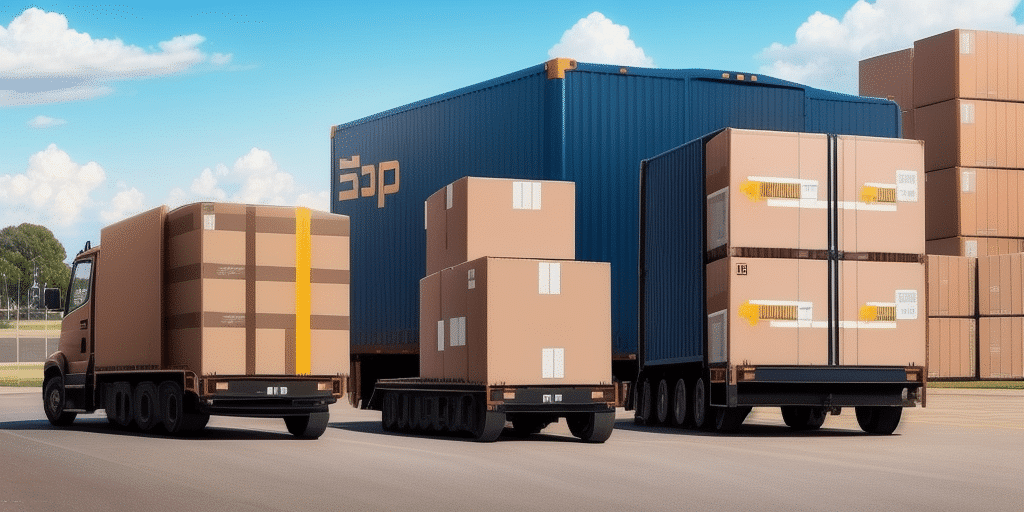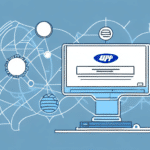How to Upgrade Your UPS WorldShip Software
If your business relies heavily on UPS for shipping and logistics, upgrading your UPS WorldShip software should be a top priority. With new features and improvements constantly being introduced, upgrading your software is essential to stay competitive and efficient in the fast-paced logistics world. In this article, we will guide you through the benefits of upgrading, the best practices for upgrading, and troubleshooting common issues.
Understanding UPS WorldShip Software
What is UPS WorldShip Software?
UPS WorldShip software is a powerful tool that helps businesses manage their shipping and logistics functions. It provides real-time tracking information, integrates with a range of shipping services, supports multiple shipping locations, and offers automated shipping labels and documentation.
One of the key benefits of UPS WorldShip software is its ability to streamline the shipping process. With features like batch processing and address validation, businesses can save time and reduce errors when shipping large volumes of packages. Additionally, the software's reporting capabilities allow businesses to analyze their shipping data and identify areas for improvement.
Another advantage of UPS WorldShip software is its flexibility. The software can be customized to meet the specific needs of a business, with options for integrating with other systems and creating custom shipping labels and documentation. This makes it a valuable tool for businesses of all sizes and industries, from e-commerce retailers to manufacturers and distributors.
Why Upgrade Your UPS WorldShip Software?
Upgrading your UPS WorldShip software enables you to take advantage of the latest features and improvements. These upgrades may include better integration with other shipping and logistics tools, improved tracking and reporting features, and more efficient shipment processing. Additionally, upgrading your software ensures that you are using a version that is still supported by UPS, which means that security updates and bug fixes are still being applied.
Another reason to upgrade your UPS WorldShip software is to stay compliant with changing regulations and requirements. As shipping regulations and requirements evolve, UPS updates their software to ensure that their customers can comply with these changes. By upgrading your software, you can be sure that you are meeting all necessary regulations and requirements.
Finally, upgrading your UPS WorldShip software can also improve your overall customer experience. With new features and improvements, you may be able to offer your customers more shipping options, faster delivery times, and better tracking information. This can lead to increased customer satisfaction and loyalty, which can ultimately benefit your business in the long run.
Benefits of Upgrading Your UPS WorldShip Software
Enhanced Features and Functionality
Upgrading brings new features that enhance the functionality of UPS WorldShip. For instance, the latest versions may include advanced tracking capabilities, improved user interfaces, and better integration with other business tools. These features can help streamline your shipping processes and improve overall efficiency.
Compliance and Security Improvements
With the rising threat of cyber attacks, ensuring that your shipping software is up-to-date with the latest security patches and protocols is crucial. Upgrading your software can help protect your business and customer data from potential security breaches. Additionally, compliance with international shipping regulations is continuously updated, and maintaining the latest software version ensures adherence to these standards.
Improved Customer Experience
New software versions often come with enhancements that allow you to offer better services to your customers. This includes faster processing times, more accurate tracking information, and a wider range of shipping options. Enhancing these aspects can lead to higher customer satisfaction and loyalty.
Best Practices for Upgrading
How Often Should You Upgrade?
UPS releases new updates and upgrades to their WorldShip software regularly. It is recommended to consider upgrading at least once a year to ensure that you have the latest features and improvements. However, if your business relies heavily on WorldShip for operations, more frequent upgrades may be beneficial to address potential issues promptly and maintain optimal performance.
Additionally, some updates may be mandatory to maintain compatibility with other systems or to comply with new regulations. In these cases, upgrading as soon as possible is crucial to avoid any disruptions to your shipping operations.
Preparing for the Upgrade
Before initiating the upgrade process, ensure the following:
- Backup Your Data: Always back up your WorldShip data to prevent data loss during the upgrade.
- Administrative Access: Confirm that you have administrative rights on your computer and that all other users are logged off.
- System Requirements: Verify that your computer meets the minimum system requirements for the latest version of WorldShip.
- Review Release Notes: Familiarize yourself with the changes or new features in the latest version by reviewing the release notes and user guides.
- Check Third-Party Compatibility: If you use third-party integrations, ensure they are compatible with the new version or update them as necessary.
Step-by-Step Upgrade Guide
- Visit the UPS WorldShip website and download the latest version of the software.
- Run the installation program and select the option to upgrade WorldShip.
- Follow the on-screen prompts to complete the installation process.
- After installation, launch WorldShip and follow the prompts to import your settings and data from the previous version.
Post-upgrade, take some time to explore the new user interface and functionalities to fully leverage the latest features.
Troubleshooting Common Issues During Upgrade
During the upgrade process, you might encounter some issues. Here are common problems and their solutions:
Installation Failures
If the installation fails to complete, ensure that your system has enough free disk space and meets the minimum system requirements. Temporarily disable any antivirus software that might be interfering with the installation process.
Data Import Issues
If the upgrade fails to import your data and settings, verify that your backup is complete and correct. Attempt the upgrade process again, ensuring that the backup file is accessible and not corrupted.
Compatibility Problems
Compatibility issues with other software or hardware can disrupt the upgrade. Before upgrading, check for any known compatibility issues on the UPS WorldShip support page. Temporarily disable any third-party software or hardware that might conflict with the upgrade process.
Seeking Support
If issues persist after troubleshooting, contact UPS WorldShip's support team for assistance. They can provide additional guidance and solutions to resolve upgrade-related problems.
Customization and Integration
How to Customize Your Settings and Preferences
Customizing your UPS WorldShip settings can streamline your shipping and logistics operations. Adjust settings such as shipment defaults, automatic exporter settings, and specific service or carrier preferences by navigating to the preferences section of the WorldShip menu.
Label Printing Preferences: Choose the label format (thermal or laser) and adjust the size and layout to fit your needs, reducing errors and saving time.
Address Book Management: Add and edit addresses for customers, suppliers, and other contacts, allowing for quick selection and entry of shipping information. Set default addresses for specific contacts to further streamline the process.
Integrating Other Shipping and Logistics Tools
UPS WorldShip can be integrated with various shipping and logistics tools, such as shipping scales, barcode scanners, inventory management systems, and order fulfillment software. These integrations enhance efficiency by reducing manual data entry and providing a comprehensive view of the shipping process.
To integrate hardware devices, navigate to the devices section of the WorldShip menu and select the hardware you wish to connect. For software integrations, refer to the specific integration guides provided by both UPS and the third-party software vendors.
Integrating these tools can significantly improve shipping accuracy and operational efficiency, ultimately benefiting your business's bottom line.
Tips and Tricks for Using UPS WorldShip Efficiently
- Batch Processing: Utilize the UPS WorldShip Batch function to process multiple shipments simultaneously, saving time and reducing manual effort.
- Automated Imports: Take advantage of the 1-Click Import feature to quickly import shipments from other software applications, streamlining your workflow.
- UPS My Choice Integration: Enhance customer control over their shipments by integrating UPS My Choice, allowing customers to manage delivery preferences.
- Regular Training: Ensure that your team is well-trained in using UPS WorldShip's features to maximize its potential and maintain operational efficiency.
- Stay Informed: Keep up with the latest updates and features released by UPS to continuously improve your shipping processes.
By implementing these tips and best practices, you can fully leverage the capabilities of UPS WorldShip software, ensuring a more efficient and effective shipping process for your business.






















